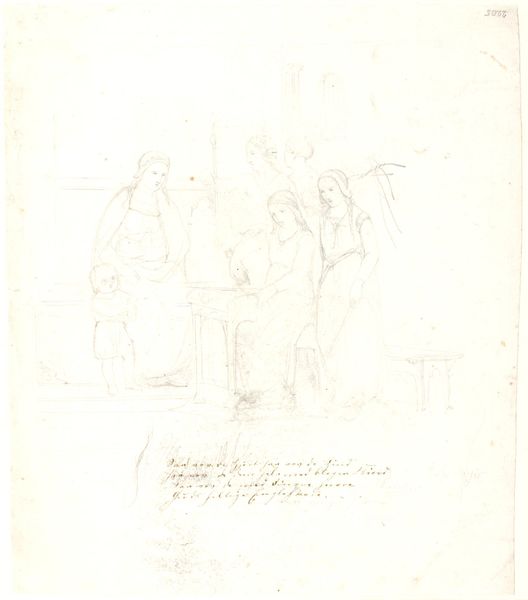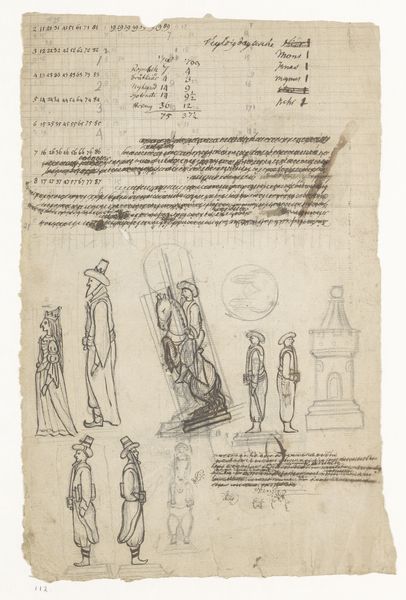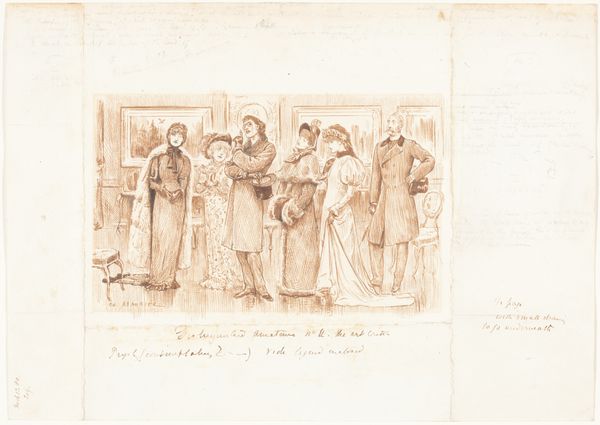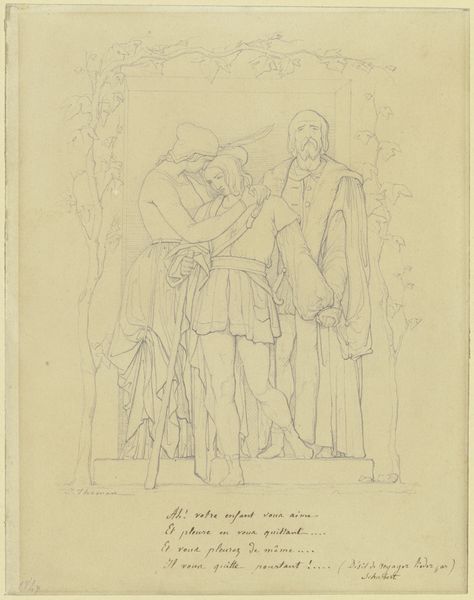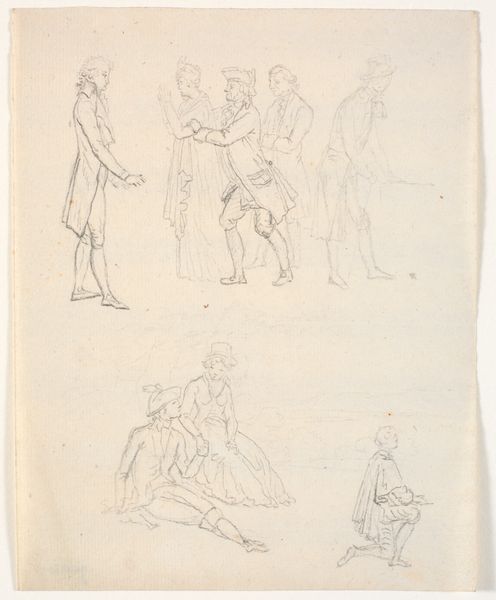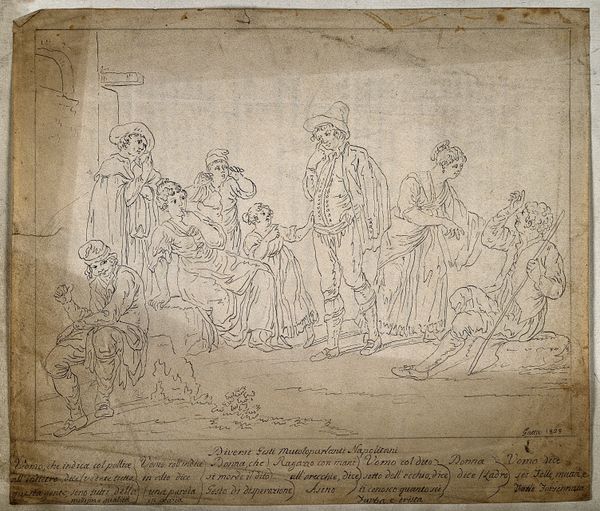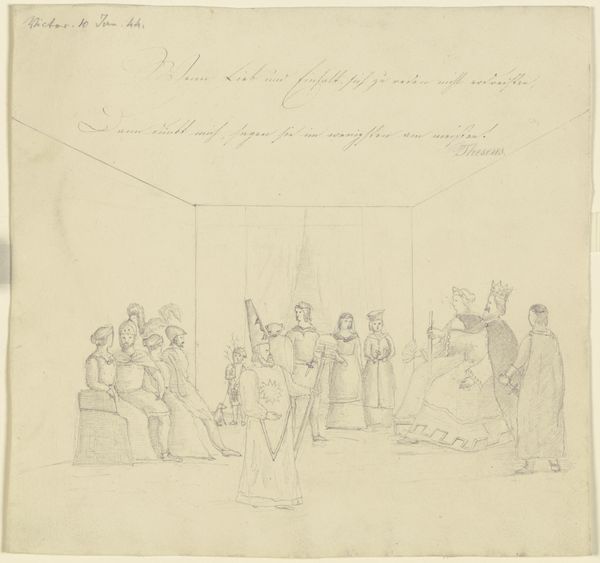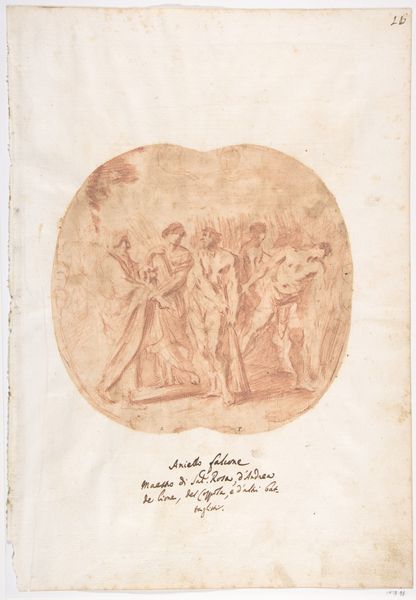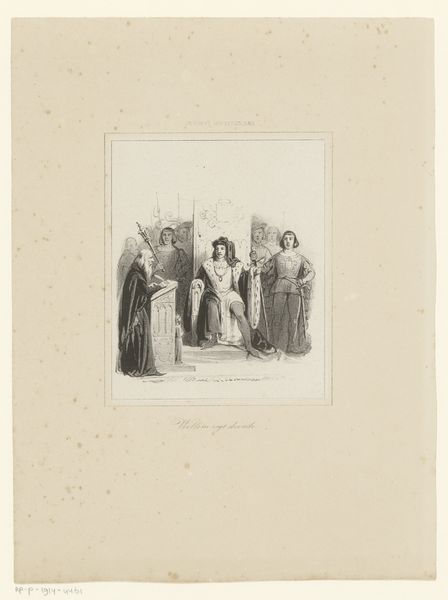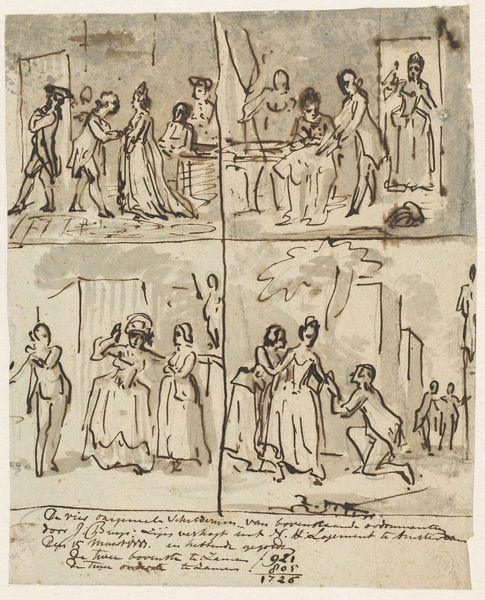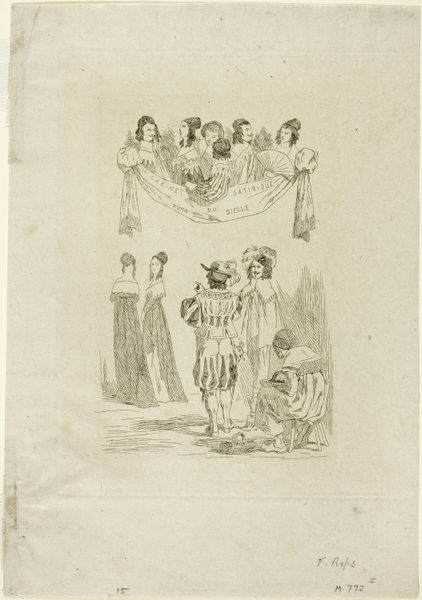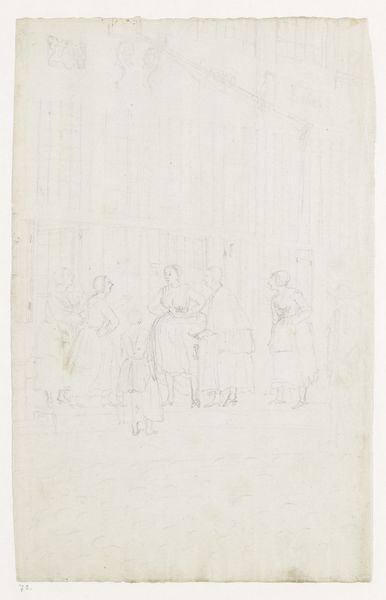
Scene af Ossian. Ossian giver Malorchols datter Oinamorul til den fangne Tontormoth, hvem hun elsker 1743 - 1809
0:00
0:00
drawing, pencil
#
drawing
#
neoclacissism
#
narrative-art
#
figuration
#
pencil
#
history-painting
Dimensions: 227 mm (height) x 196 mm (width) (bladmaal)
Curator: Welcome, let's delve into "Scene af Ossian. Ossian giver Malorchols datter Oinamorul til den fangne Tontormoth, hvem hun elsker", a drawing crafted between 1743 and 1809 by Nicolai Abildgaard. Editor: My first impression is one of understated drama. The pencil lines are so delicate, the figures seemingly caught in a moment of suspended tension. It has a wonderful ethereal quality to it. Curator: Indeed. This work, rendered in pencil, is held within the Statens Museum for Kunst's collection. Abildgaard situates this historical narrative squarely within Neoclassicism, presenting an idealized vision of love, sacrifice, and power dynamics rooted in epic poetry. The arrangement clearly speaks to historical tropes regarding romantic power. Editor: Absolutely. The composition is quite striking—the way Abildgaard employs line weight to define form, creating depth despite the sparseness of detail. There's an almost sculptural quality to the figures. Note, too, how that central figure commands space as if poised in contrapposto, indicative of its formal design. Curator: Look closer. The drawing's narrative resonates strongly with debates around arranged marriage and female agency in the 18th century, issues deeply woven into the period's socio-political fabric. This scene, depicting Ossian granting Oinamorul to her beloved Tontormoth, can be interpreted as a commentary on women's limited choices versus their potential for self-determination. Editor: I see your point. Yet, consider how Abildgaard constructs the gazes, the delicate angling of the heads that further emphasizes the overall structure of the design, reinforcing a feeling of inevitability in the scene that seems timeless. Curator: And, we can reflect on how this echoes feminist and postcolonial narratives questioning patriarchal structures in storytelling, thereby providing a fresh perspective on history. The figures convey longing and conflict that invite us to reconsider traditional interpretations of historical narratives, particularly in understanding agency. Editor: Viewing this sketch then, what seems unfinished reveals volumes regarding formal considerations of line and shape and its timeless relevance, prompting continuous formal reexamination. Curator: Seeing it from this lens, we appreciate Abildgaard’s artwork in the historical power and societal context within Neoclassical art production.
Comments
No comments
Be the first to comment and join the conversation on the ultimate creative platform.
